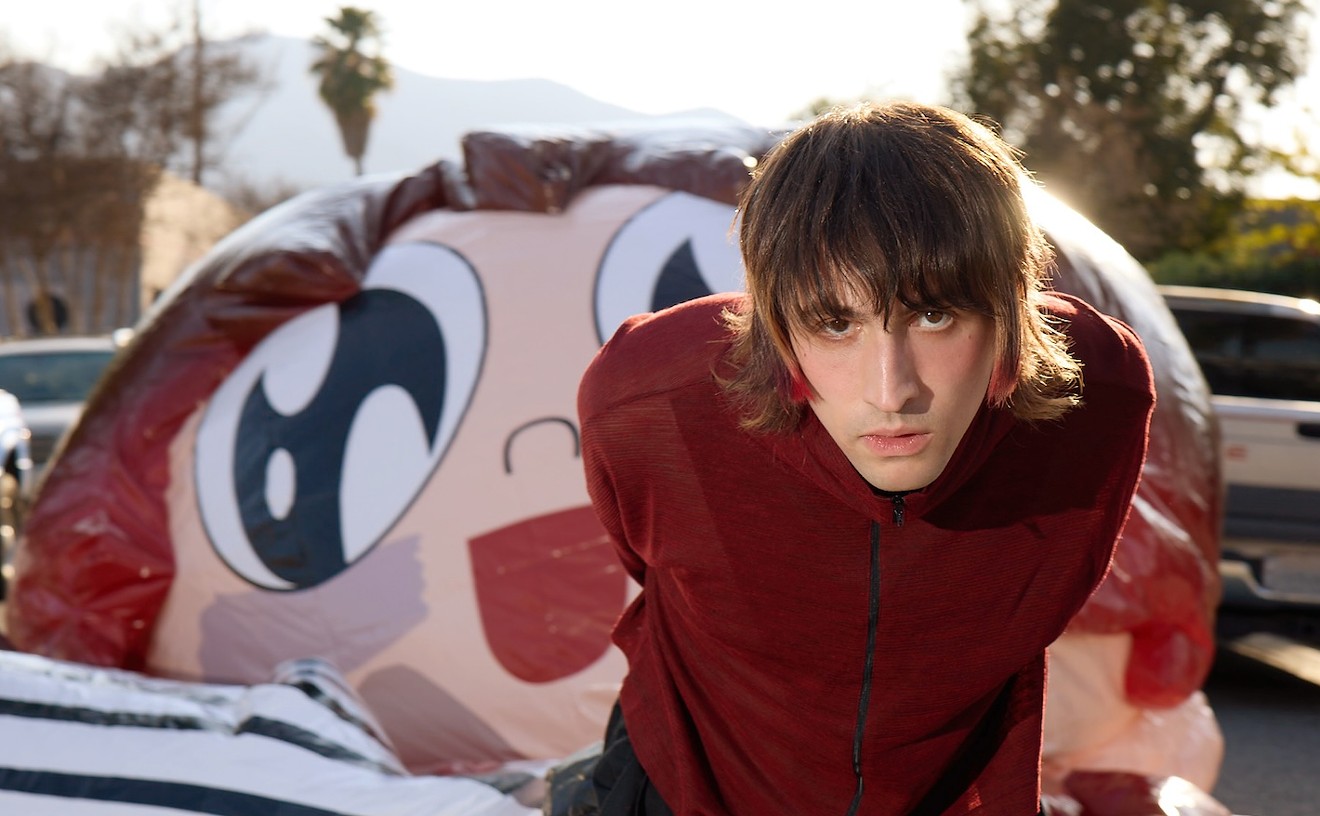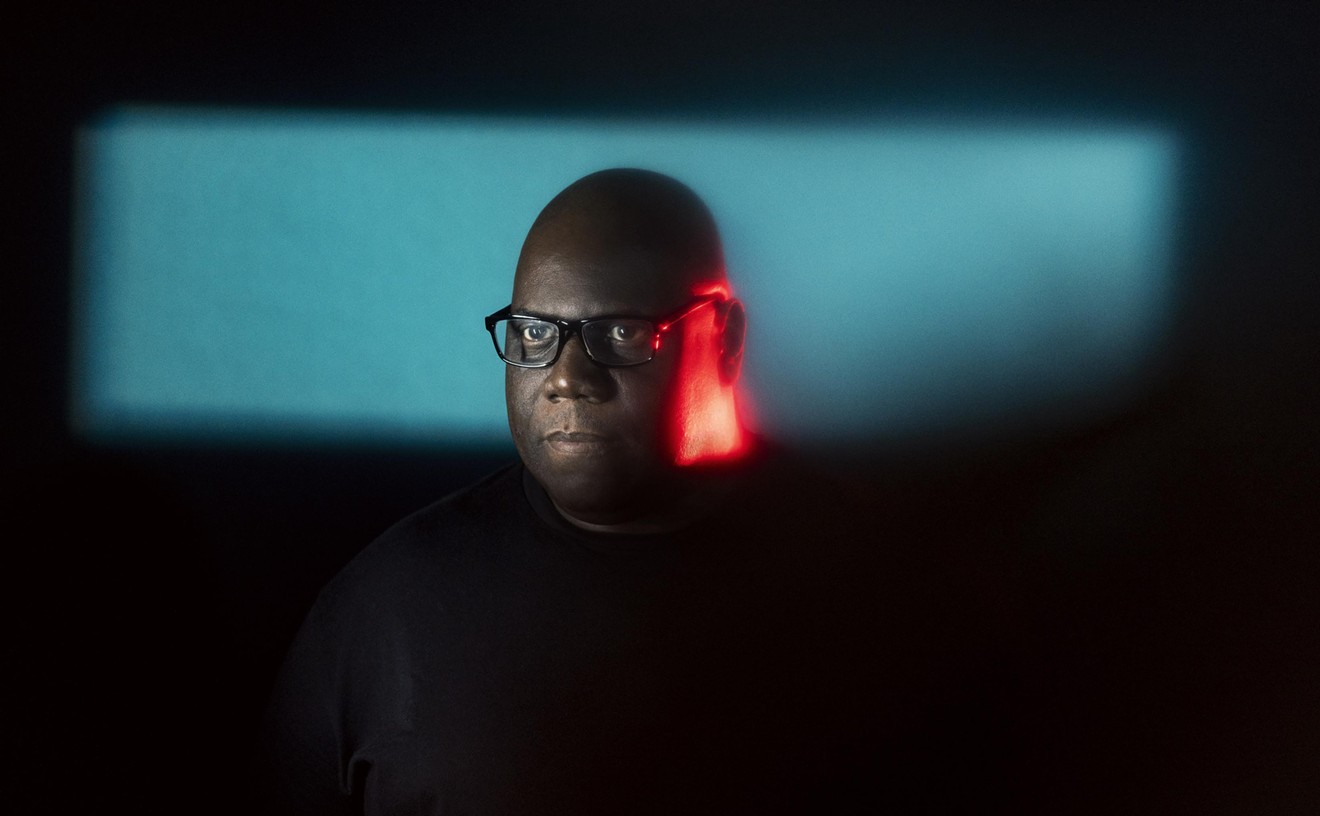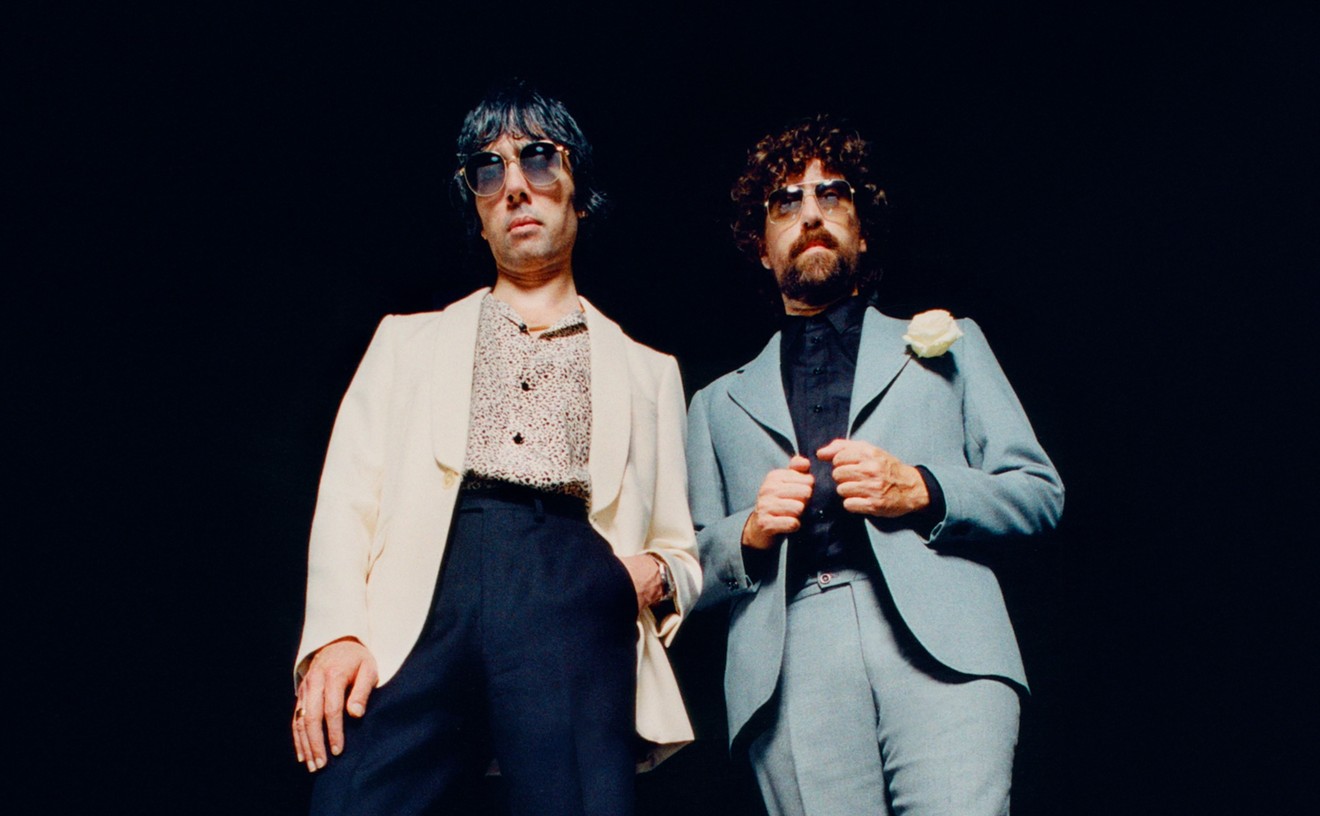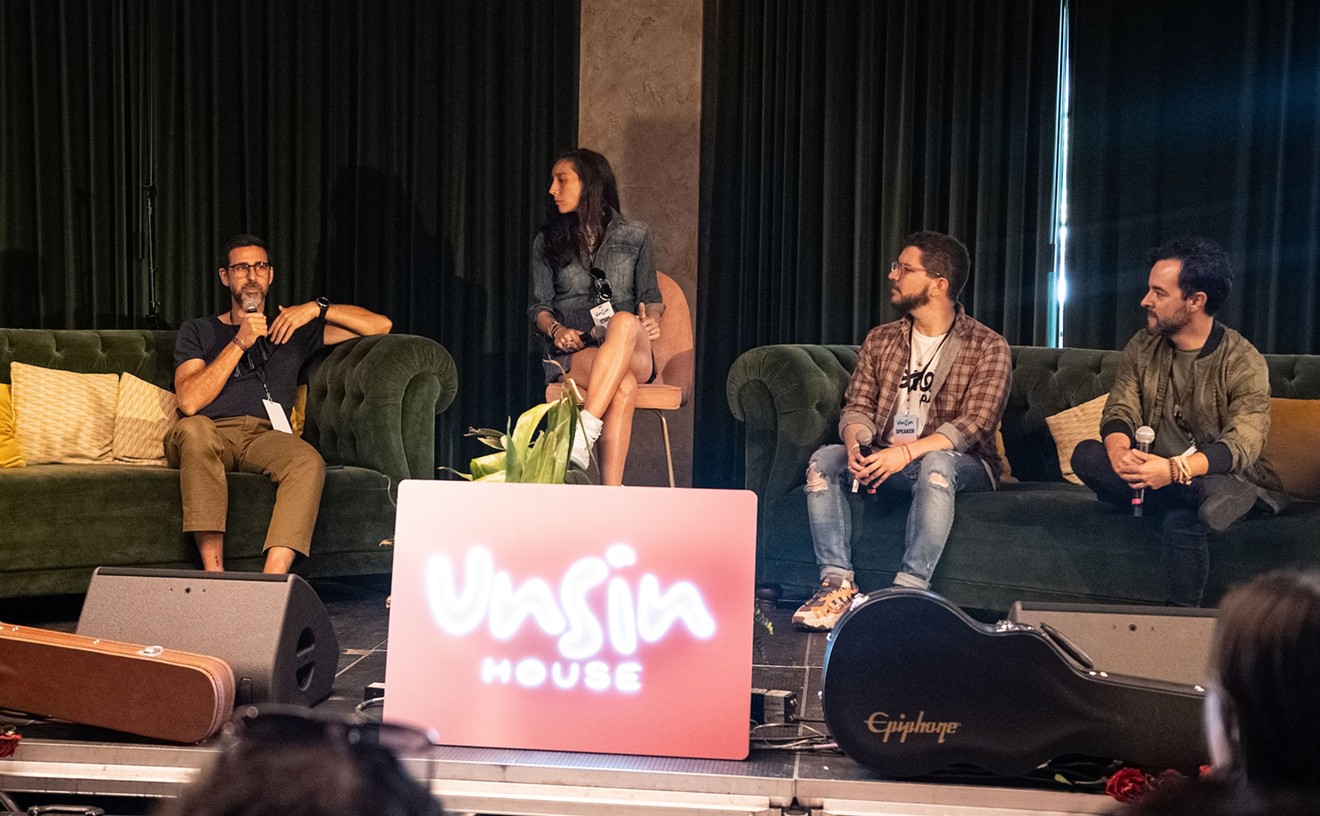Quiet for much of the late Eighties (he continued to release records in Japan and appeared on Aretha Franklin's 1986 record Aretha), Graham resurfaced in 1993 following Sly and the Family Stone's induction into the Rock and Roll Hall of Fame. Within a year of that reunion, Graham had reformed Graham Central Station from the scraps of Sly's old group, adding former Family Stoners Cynthia Robinson on trumpet and Jerry Martini on saxophone. By the middle of the decade, the band was touring again, and before long the new GCS had attracted the attention of The Artist (then known as The Artist Formerly Known As Prince). The Minneapolis genius had credited Graham as an inspiration for many years, and he made good on the compliment by awarding GCS the opening spot on his Jam of the Year tour and coproducing Graham's comeback album, GCS 2000, which was released this past week on The Artist's NPG label.
Rehabilitating old funk acts is nothing new for The Artist. He did it in 1989, paying off George Clinton's tax bill and bankrolling Dr. Funkenstein's The Cinderella Theory (read: "some day my Prince will come"), which included the phenomenal "Why Should I Dog U Out?" and "Tweakin'." He did it this past year, when he co-wrote and produced Chaka Khan's Come 2 My House. And he's doing it here. As usual these collaborations are a tricky balancing act, with the older artists trying hard to maintain their own personality in the midst of The Artist's soundscapes. When they fail the results can be slightly disappointing, as on Come 2 My House, which sometimes pushed Khan to the background. But as GCS 2000 proves, the only thing worse than failure is success.
With the exception of a robotic spoken-word intro and a crying-baby outro (both, presumably, are nods to Prince's "1999"), GCS 2000 is very much a Larry Graham album. As a result it's a mixed bag, a collection of competent pop-funk that suffers from Graham's unctuous personality and insistence on playing both lover-man and hard-core funkateer. Although there's nothing terribly wrong with any of the songs (the sinuous "Free" is a loose-jointed throwback to the mid-Seventies sound of the Ohio Players and Slave; "Love 4 1 Another" starts strong before fading; and "Don't Let 'Em Change U" has its moments), Graham seems constitutionally incapable of Sly Stone's slick, wicked wordplay or George Clinton's undeniable groovesmanship. Instead his distinguishing characteristic seems to be a kind of false cheer. The goofy cover photo shows Graham decked out inexplicably in a captain's hat, and the first verse of the title track ("My name is Larry/With a big old G/I used to be hairy/But now I'm just funky") sounds like a cross between "Dance to the Music" and something from a Saturday Night Live cheerleader skit. In fact GCS 2000 works best when Graham lays off the funk and croons. "U Move Me" is a smooth, if generic, lover's prayer featuring back-up vocals by Graham's wife and daughter, and a re-recording of "Just Be My Lady" uses The Artist's keen falsetto to great effect.
In the end, though, the most interesting thing about GCS 2000 isn't its music, but its message. Throughout the dozen songs on this record, Graham insists repeatedly that the world needs more love, brotherhood, and individual vision. These are admirable sentiments, of course, but they're also maddening, in part because they're so predictable, but also because they slavishly ape the sensibility of Graham's former band, Sly and the Family Stone. Add to this the fact that there's no love lost between Graham and his former boss (by the time Graham left the Family Stone in 1972, things had gotten so bad that Graham had supposedly hired a hit man to off Sly), and the mission of the new record seems clear: to crown Graham as the king of funk and erase Sly from the record.
Think this sounds far-fetched? Check out The Artist's liner notes: "Larry is not just funky -- he is funk ITSELF. Think I'm lyin'? Flip your balance knob to the side without Larry's bass while listening to Sly's Greatest Hits, and tell me afterwards, what funk is . . . yes, it's [sic] name is Larry Graham." This is ridiculous, of course, as absurd as insisting that Bill Wyman meant more to the Stones than Keith Richards, or that Toni Kukoc will be able to carry the post-Jordan Bulls. As any true funk aficionado knows, Graham was never more than a piece of Sly's puzzle. In fact his departure from the Family Stone in 1972 didn't even slow Sly down. He simply replaced Graham with Rusty Allen, retooled the group's sound a bit, and released Fresh, one of the fleetest, most exquisite pieces of funk ever recorded. Comparing the best tracks from that album ("Frisky," "Babies Making Babies," "Let Me Have It All," "If You Want Me to Stay," and especially the dazzling "In Time") with Graham's solo hits is like comparing caviar to rotting fish. This funk revisionism is all the more ironic given the fact that many of The Artist's compositions have avoided strong pop-and-slap basslines ("When Doves Cry" doesn't have one, and neither does "Kiss").
Why would an artist as musically conscious as The Artist sell out Sly for Graham? Spiritual kinship, for one. Long opposed to both violence and substance abuse, The Artist undoubtedly has a hard time identifying with Sly, a dark-star hedonist who vanished inside the black seam of Seventies-era Los Angeles and never returned. Graham, on the other hand, is a Jehovah's Witness who spends his time talking about the glory and clarity of God, an obsession that no doubt appeals to The Artist. On a TV appearance last year on Sinbad's VIBE, Graham practiced a little propheteering, explaining how he led The Artist's camp in regular Bible study. His spiritual guidance even prompted The Artist to change the title of the powerful 1987 ballad "The Cross" to the ham-fisted "The Christ," and to perform in front of a banner that read "Stauros," which is the Greek word for cross. United in God, Graham and The Artist have no time or tolerance for human weakness. And Sly is nothing if not an example of human weakness. (These days, of course, he is said to be holed up in L.A., hard at work on a comeback album with producer Jerry Goldstein, but that's been the rumor since 1991.)
The Artist's liner notes aren't the only place that Sly's getting slighted. Most of the Jam of the Year tours include a segment in which Graham steps to the microphone and launches into a medley of Sly and the Family Stone hits. At Madison Square Garden last September, Graham reminisced about the last time "his band" had played those songs in New York City. "It was more than 25 years ago," he said. "We're happy to be back," he said. "I want to take you higher," he sang. "I am everyday people," he sang. He didn't mention Sly's name. Not even once.










